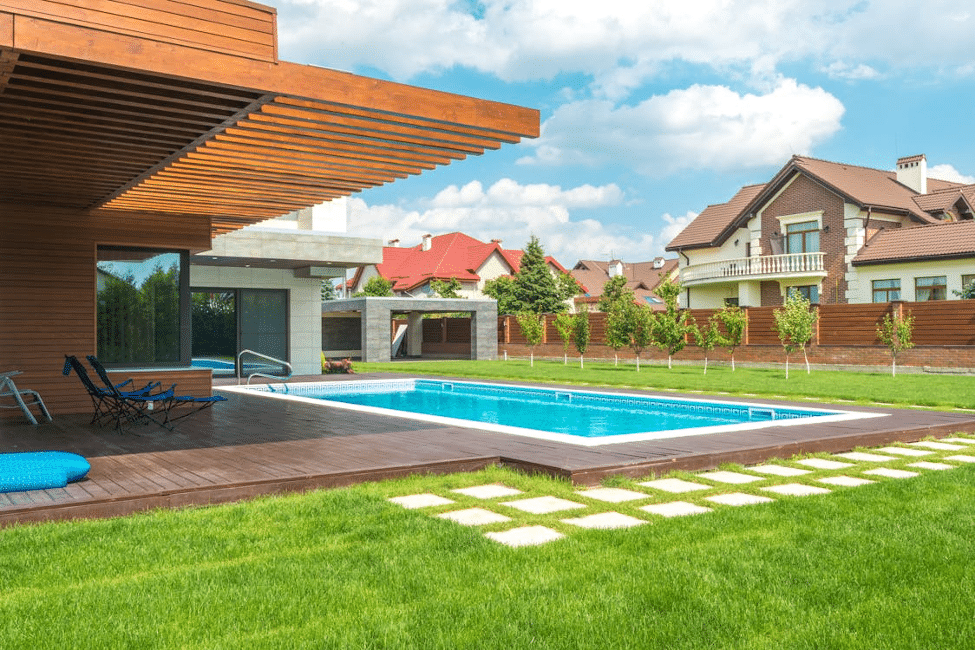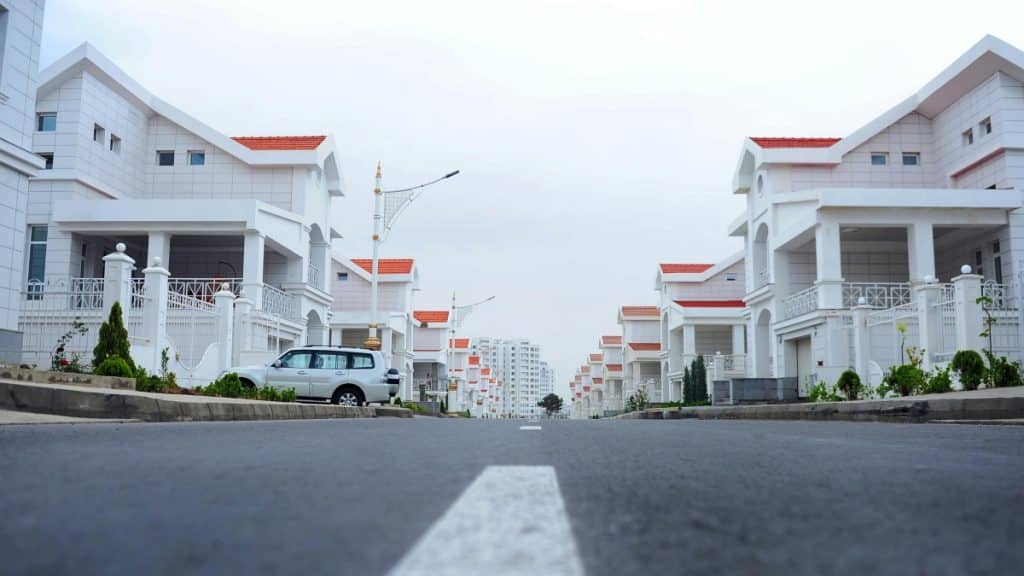Introduction
The idea of senior living is changing. Retirement villages are becoming popular in Kuala Lumpur and other parts of Southeast Asia. These communities focus on what older adults need and want. They focus on comfort, convenience, and a lively way of life. One key part of building good retirement villages is working with architects who specialize in this area. This blog post looks at important safety factors to keep in mind when creating places for seniors living in Asia. This way, we can help residents and their families feel secure.
Ensuring Safety in Home Construction with Top Retirement Village Architects in Asia
Safety is very important when building homes for older people. In the busy cities and quiet areas of Asia, a new group of retirement village architects is rising. They focus on safety in their designs. These architects pay attention to how buildings look, but they care more about making them practical and easy to use for seniors.
They add features like non-slip floors and bright walkways to reduce risks. By putting safety first, these architects aim to build a safe and cozy place for seniors. This allows them to enjoy their golden years peacefully and happily.
1. Identifying the Best Architectural Practices for Age-Friendly Design
The key to a safe retirement village starts with good design. Every part of the project, including the first phase of the project, from the first plan to the last detail, should follow age-friendly principles. Architects who focus on senior living know how aging affects people’s bodies and minds. They design features like wider doorways for wheelchairs, non-slip floors to stop falls, and handles or railings that are easy to hold. Lighting is also important. Lots of natural light helps people sleep better, and bright spaces reduce accident risks. By thinking about these factors, architects create homes where residents can enjoy their golden years.
Additionally, the idea of “active aging” is very important. Architects can add walking paths, gyms, and fun spaces that help people stay active and connect with others. This way of thinking means retirement villages are more than just places to live; they become lively communities that support health and happiness. For those looking for innovative designs in this field, working with the best retirement village architect in Asia can make a significant difference in creating spaces that are both functional and beautiful.
2. Incorporating Disaster-Resilient Features in Retirement Villages
When creating retirement homes, we need to think about safety more broadly. Natural disasters can bring serious dangers. This is why retirement villages need to include features that can stand up to such events.
Architects should team up with structural engineers. Together, they can make sure buildings can handle earthquakes, high winds, and heavy rain. Adding backup power generators, emergency lights, and clear escape routes can help everyone be ready for surprises. These steps give residents peace of mind and help them feel safe.
It’s also very important to have medical facilities that are easy to access. A clinic with skilled staff can give quick help in emergencies and regular healthcare services. This helps reduce the need for residents to travel far for medical care. By preparing for possible disasters, we can make sure retirement villages are safe places, even when natural events occur.
3. Utilizing Sustainable Materials for Healthier Living Environments
The choice of building materials affects the health of people living in retirement villages. Many architects are now using safe and sustainable materials. These materials reduce exposure to harmful chemicals. They help create a healthier living space.
Using low-VOC paints, glues, and finishes can improve the air quality indoors. Natural materials like bamboo and cork are also strong and look good. Adding things like indoor plants and green areas makes the spaces look more appealing. This can help improve the mental and emotional health of residents.
Sustainable materials usually have better insulation. This means they use less energy for heating and cooling. By using these eco-friendly options, architects show they care about the wellness of the residents and the earth. This reflects a broad approach to designing senior living spaces.
4. Integrating Advanced Security Systems for Elderly Safety
Integrating better security systems is important for keeping residents safe in retirement villages. Architects can work with security experts to add advanced systems that focus on the needs of senior residents.
Features like CCTV cameras in shared spaces, access controls, and around-the-clock security staff help create a secure area. These measures can prevent incidents. Also, having medical alert systems in each unit allows residents to quickly call for help in an emergency, adding even more safety.
By including these modern facilities, architects help create a space where residents can feel safe. They know their safety is a top priority. This gives them the chance to enjoy all the amenities and activities without fear, promoting a real feeling of community and peace of mind.
5. Emphasizing Accessibility in All Design Phases

Accessibility should be a key part of designing retirement villages. It needs to be a focus from the start. This means thinking about the different needs of residents, including those who have trouble moving, seeing, or face other challenges. Architects can use basic design rules to make spaces that everyone can use.
Features like wide corridors, ramps instead of steps, and door handles that you can push down help people move around easily. This promotes independent living. Also, having seating areas placed throughout the community gives residents spots to rest, so they can move around comfortably. Smart design also covers the amenities, like gyms that have equipment for all to use, swimming pools with easy entries, and recreational areas that everyone can access.
When architects prioritize accessibility, they create a welcoming place where residents can enjoy their surroundings and keep their independence.
6. Designing for Social Interaction and Mental Well-Being
A sense of community and belonging is very important for the mental health of older adults. Architects help create these connections by designing spaces that encourage people to interact and enjoy life together.
Open layouts in places like dining halls, lounges, and recreational areas invite residents to meet and talk. Adding outdoor areas like courtyards, gardens, and walking paths gives them more chances to relax and connect casually. By thinking about how these spaces work, architects can meet the needs of both social people and those who like quiet time alone.
Holding events and activities in these shared areas also helps build a sense of belonging. This can help reduce feelings of loneliness and isolation. Events like group fitness classes, game nights, workshops, and social gatherings allow architects to help create a lively community where residents feel together and supported.
7. Creating Energy-Efficient Homes to Lower Long-Term Costs
Designing energy-efficient homes in retirement villages has many benefits. First, it helps cut down utility bills for residents. This gives them more money to use for other things. Adding features like solar panels, energy-saving windows, and good insulation can lower energy use a lot.
Also, using energy-efficient appliances, low-flow water fixtures, and LED lights can save money over time and help the environment. Architects can team up with sustainability experts to make sure they use energy wisely while keeping homes comfortable.
This green approach makes retirement villages good for both people’s wallets and the planet, providing lush greenery that enhances the environment. It also meets the rising demand for responsible living. By investing in these features now, developers can draw in residents who care about the environment and help build a better future for senior living.
8. Implementing Effective Fire Prevention and Emergency Response Systems
Fire safety is very important in retirement villages. Architects must put fire prevention first. They should also add strong emergency response systems to keep residents safe. This means using fire-resistant materials, putting fire extinguishers and smoke detectors in good places, and clearly marking evacuation routes throughout the building.
Regular fire drills help residents get used to safety procedures. These drills make sure residents know what to do during an emergency. Working with fire safety experts to assess risks and set up safety measures is vital.
In addition, giving staff complete training in fire safety prepares them to handle emergencies well. This training helps them to assist quickly. By following these strong guidelines, retirement villages can build a culture of safety. This reduces risks and helps residents and their families feel more confident.
9. Maximizing Natural Light and Ventilation for Healthier Spaces
Natural light and fresh air are very important for a healthy home, especially for seniors. Architects working on retirement villages should focus on designs that bring in more light and good ventilation, such as incorporating plantation shutters in Melbourne. Using big windows, skylights, and open layouts can help let in natural light. This decreases the need for artificial lights during the day.
It creates a brighter and friendlier space. It also helps improve the mood, sleep, and overall wellness of the residents. Good ventilation is equally important. It helps keep the indoor air clean and stops harmful allergens from building up. Architects can add windows that open, use cross-ventilation, and include mechanical ventilation systems if necessary.
By focusing on these features, retirement villages can create open and bright areas, including a spa. This helps make a happier and more comfortable living space for senior residents. This careful design shows that they care about resident health and joy in senior living.
10. Personalizing Living Spaces to Meet Diverse Elderly Needs
While shared spaces help people feel like they belong, private living areas should provide comfort, privacy, and a sense of personal identity for retirees. Architects can help residents by giving them choices to make their homes reflect their style and preferences.
When offering different apartment layouts and sizes, residents can choose a home that fits their needs. Giving them options like choosing paint colors, flooring, and kitchen features helps them create a space that feels like home. For example, selecting plantation shutters in Melbourne can be a great way to add a personal touch, offering both style and privacy.
Additionally, letting residents bring in their own furniture and favorite belongings helps them feel more comfortable and familiar. This focus on the individual ensures that retirement communities can meet the various needs of their residents, promoting a sense of personal identity and ownership within the community.

Conclusion
Safety in building homes for retirement villages is very important. By choosing the best retirement village architects in Asia, you can create designs that are friendly for older people. These designs will also withstand disasters and use sustainable materials for a healthier lifestyle. It’s vital to include advanced security systems. You should also focus on easy access and create spaces that encourage social interaction for the well-being of the elderly. Don’t forget about energy efficiency, fire safety, and personal living areas that fit different needs. Make sure to include plenty of natural light and fresh air to support healthier environments. Working with experts will help ensure that homes are safe and also improve seniors’ quality of life.
Frequently Asked Questions
What certifications should a retirement village architect have in Asia?
- Find architects who have special certifications in geriatric design.
- Look for those who have shared new ideas about senior living projects at events like the World Architecture Festival.
- Search for experts who have successfully created safe and accessible spaces for elderly residents.
- Look for professionals who can design engaging environments for seniors.
How do sustainable materials contribute to safer retirement homes?
Sustainable materials make retirement homes safer. They focus on the health of residents and the environment. These materials help reduce exposure to harmful chemicals. This leads to better indoor air quality. It also lowers the chances of respiratory issues and allergies.
How can design promote accessibility and mobility for the elderly?
Design is very important for helping elderly people live an active lifestyle. It does this by making it easier for them to move around. Things like wide hallways, ramps, non-slip floors, and bright lighting help them move on their own. These features can also lower the chance of accidents.
